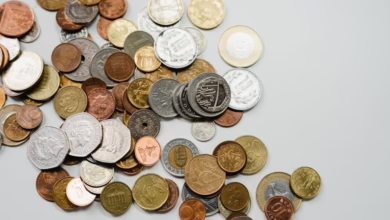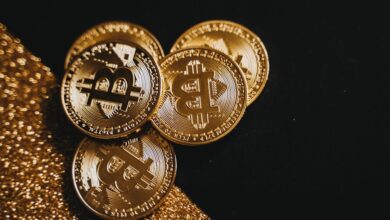Comprehensive Guide to Gold Investment: Bullion, Coins, ETFs, and Mining Stocks in Today’s Market

Gold has long been regarded as a safe haven asset, cherished not only for its intrinsic beauty but also for its enduring value in the face of economic uncertainty. As we navigate an increasingly volatile financial landscape, understanding the nuances of gold investment has never been more critical. This article delves into various forms of gold investments, including gold bullion, coins, and gold ETFs, providing insights into their unique benefits and risks.
In today's economy, where inflation continues to challenge traditional monetary systems and gold prices fluctuate based on market trends, the role of gold as a hedge against economic instability becomes paramount. We will explore how central banks are stockpiling gold reserves and the impact this has on global gold demand and trade.
Additionally, we will analyze the burgeoning sector of gold mining. Investing in gold mining stocks not only offers potential financial returns but also raises important questions about sustainable practices and the environmental impact of gold production. This comprehensive guide aims to equip both seasoned investors and newcomers with the knowledge needed to navigate the complex world of gold investments, from physical gold and gold coins to modern gold technology and the intersection of gold and cryptocurrency. Join us as we embark on this illuminating journey through the gold market, uncovering trends, opportunities, and strategies for success.
- 1. Understanding Gold Investment: Exploring Gold Bullion, Coins, and ETFs
- 2. The Role of Gold in Today’s Economy: Market Trends and Inflation Hedge
- 3. Investing in Gold Mining: Analyzing Stocks, Production, and Sustainable Practices
1. Understanding Gold Investment: Exploring Gold Bullion, Coins, and ETFs
Investing in gold has long been regarded as a reliable strategy for wealth preservation and portfolio diversification. Understanding the various forms of gold investment is crucial for both novice and seasoned investors. This section explores gold bullion, coins, and gold ETFs, each offering unique advantages and considerations.
Gold bullion, typically in the form of bars or ingots, represents a direct investment in physical gold. Investors often favor gold bullion for its liquidity and potential to act as a safe haven asset during economic uncertainty. As gold prices fluctuate in response to global market trends, bullion can serve as a hedge against inflation, making it an attractive option for those concerned about the devaluation of fiat currencies.
Gold coins are another popular investment avenue, often sought after for their collectible value in addition to their intrinsic worth. Gold coins investing can be a rewarding venture, with some coins appreciating significantly due to their rarity and historical significance. Collectors and investors alike often look to the gold market for trends, ensuring they make informed decisions based on current gold market analysis.
Gold ETFs (Exchange-Traded Funds) offer a more accessible way to invest in gold without the need to store physical gold. These funds track the price of gold and can include a mix of physical gold, gold futures, and shares of gold mining companies. As the global gold demand continues to rise, gold ETFs have gained traction among both retail and institutional investors. They provide a convenient way to gain exposure to the gold market while also diversifying investment portfolios.
For those interested in the broader implications of gold investment, it's essential to consider factors such as central banks' gold reserves, the impact of gold recycling on supply, and sustainable gold mining practices. The gold trade is also influenced by geopolitical factors and regulations surrounding gold smuggling, which can affect prices and availability.
In summary, whether through physical gold in the form of bullion or coins, or through more modern investment vehicles like gold ETFs, understanding the nuances of gold investment is vital. As economic conditions evolve, gold remains a steadfast option for those looking to safeguard their wealth and capitalize on market opportunities.
2. The Role of Gold in Today’s Economy: Market Trends and Inflation Hedge
In today’s economy, gold continues to play a significant role, acting as both a safe haven asset and a hedge against inflation. As economic uncertainties rise, many investors turn to gold investment to safeguard their wealth. The gold market trends indicate a growing interest in physical gold, such as gold bullion and gold coins, as well as financial instruments like gold ETFs and gold futures.
Gold prices often rise during periods of economic instability, making it a preferred choice for investors looking to protect their portfolios. Inflation, in particular, erodes the purchasing power of currency, driving individuals and institutions to seek refuge in gold. This has led to an increased focus on gold reserves held by central banks, which are now accumulating more gold than in previous years to enhance their balance sheets and ensure financial stability.
Moreover, the global gold demand is not limited to investment purposes; it spans across sectors including technology, jewelry, and even luxury markets. Gold jewelry remains a staple in various cultures, while advancements in gold technology have opened new avenues for its application.
The rise of gold recycling has also contributed to the market dynamics, allowing for a more sustainable approach to gold production. Sustainable gold mining practices are gaining traction as investors increasingly seek ethically sourced gold that meets environmental and social standards.
However, the gold trade faces challenges, including the issues of gold smuggling and counterfeit gold collectibles, which can impact the integrity of the market. Investors need to stay informed with thorough gold market analysis to navigate these complexities effectively.
In addition, the interplay between gold and cryptocurrency presents an intriguing angle for future investments. While cryptocurrencies have emerged as a modern investment vehicle, gold remains a timeless asset, revered for its stability and intrinsic value. As investors weigh their options, the enduring appeal of gold, whether through physical gold, gold coins investing, or gold mining stocks, continues to shine brightly in an ever-evolving financial landscape.
In conclusion, gold serves as a critical component of today’s economy, with its properties as a hedge against inflation and a safe haven asset solidifying its place in investment strategies. Understanding current market trends and the multifaceted role of gold will empower investors to make informed decisions.
3. Investing in Gold Mining: Analyzing Stocks, Production, and Sustainable Practices
Investing in gold mining stocks can be an attractive option for those looking to diversify their gold investment portfolio beyond physical gold, gold ETFs, or gold futures. As the gold market trends evolve, investors must analyze several factors, including the company's production capabilities, the sustainability of their practices, and the overall performance of gold prices.
When assessing gold mining stocks, it's essential to look at the company's gold production levels. Higher production rates typically indicate a more robust operation, which can translate to better stock performance. Investors should consider factors such as the quality of the gold reserves in the mining company’s portfolio and their ability to maintain strong output amid fluctuating gold prices. Monitoring production costs is equally crucial, as lower costs can enhance profitability, especially during periods of gold price volatility.
Sustainability is becoming increasingly important in the gold mining sector. As global gold demand rises, the impact of mining on the environment is under scrutiny. Companies that adopt sustainable gold mining practices not only comply with regulations but also appeal to socially conscious investors. This includes minimizing environmental footprints, ensuring ethical labor practices, and engaging in gold recycling initiatives. Sustainable practices can improve a company's reputation, potentially boosting stock prices as more investors seek to align their portfolios with their values.
In addition to production and sustainability, investors should consider broader industry trends. For instance, central banks' gold purchases can significantly influence gold market analysis and prices, as increased demand from these institutions often signals a shift towards gold as a safe haven asset during economic uncertainty. Moreover, understanding the relationship between gold and inflation can provide insights into future price movements, making it a key factor in investment strategies.
As investors explore gold coins investing or luxury gold collectibles, they may also want to keep an eye on how the mining sector performs, as it can directly affect the availability and pricing of these items. Similarly, the rise of gold and cryptocurrency discussions indicates a changing landscape of investment opportunities, where traditional gold investments may increasingly coexist with digital assets.
In summary, investing in gold mining stocks requires careful consideration of production, sustainability, and market trends. By conducting thorough research and staying informed about the gold trade, investors can make sound decisions that align with their financial goals and ethical standards.
In conclusion, gold investment continues to be a compelling option for both seasoned investors and newcomers alike. Whether you choose to invest in gold bullion, coins, ETFs, or delve into the world of gold mining stocks, understanding the nuances of each avenue is crucial. The current gold market trends indicate that gold remains a safe haven asset, particularly in times of economic uncertainty and inflation. As central banks bolster their gold reserves, the demand for physical gold, including gold bars and coins, is expected to rise, further solidifying gold's role in a diversified investment portfolio.
Moreover, the shift towards sustainable gold mining practices is reshaping the landscape, making ethical investing possible while addressing the growing concerns over environmental impact and gold smuggling. As we navigate the complex relationship between gold and cryptocurrency, it's clear that gold maintains its value as a luxury asset and a hedge against economic volatility.
Investing in gold is not just about the potential for profit; it also encompasses a broader understanding of global gold demand, gold production, and market analysis. By staying informed about gold prices and trends, investors can make educated decisions that align with their financial goals. Ultimately, whether you opt for gold collectibles, engage in gold recycling, or explore gold futures, the timeless allure of gold as a valuable asset endures, promising both security and growth in an ever-evolving market.
References:
[To be added based on sources used in the article]




